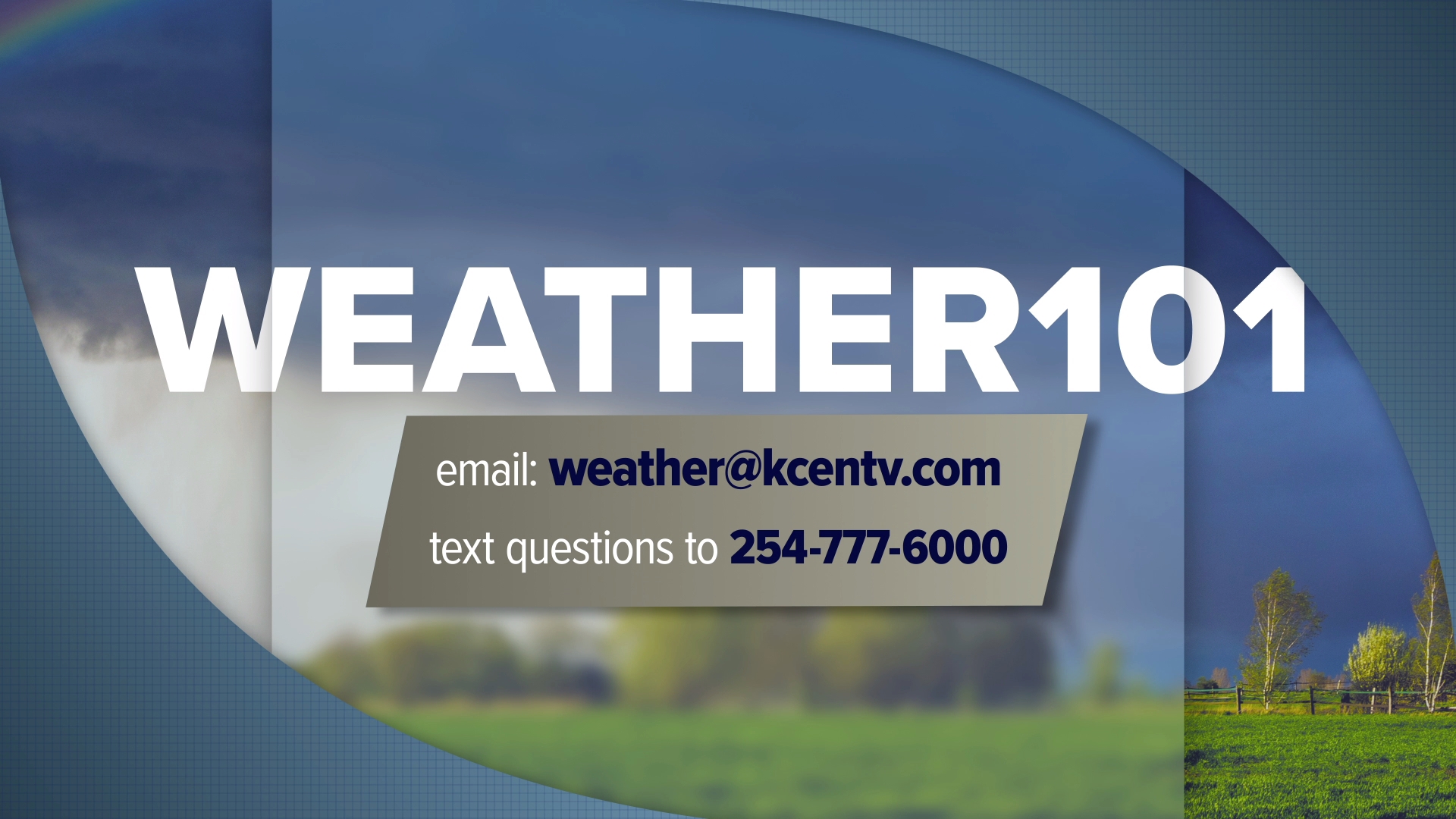TEMPLE, Texas — The impacts of heat are no stranger to us here in Central Texas, and in this Weather 101, we'll talk about the impacts this heat can have on athletes and outdoor activity.
Our topics will include heat exhaustion, effects of different outdoor surfaces, a lesson on albedo & ways to beat the heat.
Do you enjoy walking, jogging or running outdoors? It can be hard to find a safe time to do so this time of year. Working out before 10 a.m. or after 7 p.m. will help, but some organized outdoor activities and practices take place during the heat of the day. There can also be a large temperature difference between outdoor surfaces that we may be touching or standing on that you should be aware of.
In the US, an estimated 600-700 people die every year from heat-related illness, which is tragic because these deaths are entirely preventable. Extreme heat is defined as summertime temperatures that are much hotter and/or humid than average. Since some areas are hotter than others, these averages can vary for particular locations. Humid and muggy conditions can make it seem hotter than it really is, which we see in Central Texas.
It is important to know what to look for when you plan to be outdoors in the heat.
Symptoms of Heat Exhaustion include:
- Racing heart
- Excessive sweating
- Elevated temperature
- Dizziness
- Nausea
- Dry mouth
It is also important to note that heat-related illness is much more common for high-risk populations including children, the elderly and those with pre-existing heart conditions.
Temperatures of outdoor surfaces are another factor when it comes to heat in relation to athletics. The temperatures of concrete, grass or a turf football field can vary drastically. According to the National Strength and Conditioning Association (NSCA), an outdoor track surface can reach temperatures as high as 147° Fahrenheit. The temperature of a track surface for walkers, joggers or runners isn't a huge factor if going a short distance, but it can be for longer distance athletes.
Consider running on grass or a light-colored rock path with shade, if possible, as grass temperature can get up to 104° compared to 150° on asphalt. Also remember that if you are out jogging with your dog, their paws can feel the heat and they can be burned by concrete or asphalt. If it's too hot for you to hold the back of your hand against the concrete for 5 seconds, it's too hot for our four-legged friends.
Albedo is the fraction of radiation striking a surface that is reflected by that surface. For example, a white surface that has a high albedo will reflect 80% of incoming solar radiation and will trap only 20%. On the other hand, a black surface will only reflect 10% of radiation, absorbing 90% of that heat!.
How does albedo relate to athletics and the heat? Consider the difference I just stated and what you choose to wear when performing an outdoor workout. A loose-fitting white shirt will serve you much better than dark colored clothing. Consider this when ordering a jersey for sports teams.
Dark colored objects such as ground surfaces and buildings are also a factor – the lighter, the better for reflecting heat!
Finally, let's talk about how you can beat the heat when exercising outdoors during the hot season.
Time of day is a big factor: if you can avoid the afternoon hours when the sun is high, that will help. Wearing lightly colored clothing and choosing the right surface to workout on, as stated above, will be helpful as well.
Most importantly, though, stay hydrated! The recommended amount of water to drink daily can be easily remembered by dividing your weight in half. For example, a 150 pound person should drink around 75 ounces of water per day, or 6 standard water bottles. Avoiding energy drinks that may increase your heart rate and cause other negative effects is also a handy tip.
Also, make sure to pace yourself and take breaks during outdoor activity. If you start to feel any of the symptoms we stated earlier that could indicate a heat-related illness, take a break. Keep your cell phone on you, in case you need to call someone for help.
To hear more about the impact heat and other extremes can have on your day, check out all of our other weather-related content on 6+, YouTube and KCENTV.com.
In our next Weather Impact 101 installment, Chief Meteorologist Matt Farrell will be going through a grab-bag of weather terms and what they mean for us!
More Weather 101 from 6 News:

